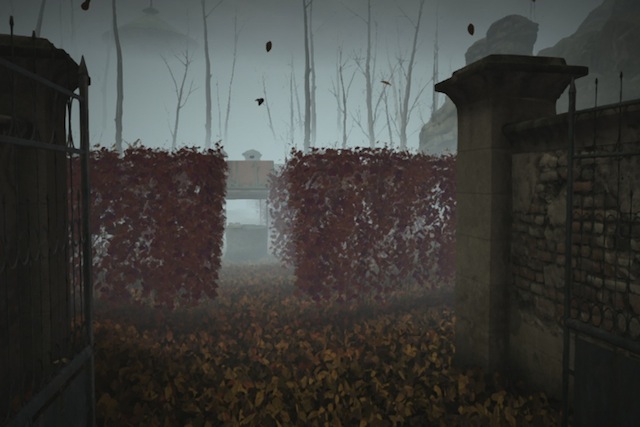Datura Review
 Game: Datura
Game: Datura
Developer: Plastic Studios/SCE Santa Monica Studio
Publisher: Sony Computer Entertainment
Available on: PlayStation 3 Only
The PlayStation 3 has long been a haven for truly unique, interesting downloadable titles. While much has been made of how stunning Journey is (and rightly so), years have passed since the release of games like Flower or Pixeljunk Eden, let alone the more mainstream yet still wholly unique titles like Fat Princess. It is now the turn of Plastic Studios to attempt to wow us, with their interactive adventure game Datura.
At the risk of causing feverish hyperbole, Datura is probably best described as a First Person take on a game like Journey. It’s an incredibly tricky task to describe it without spoilers, but to spoil the game would be doing both the experience and you, dear reader, a disservice.
Controlled with the PlayStation Move controller and completely rendered in 3D if you have the capability, you have 1:1 control of the disembodied hand (right or left, your choice) of the unnamed protagonist, who starts the game in an ambulance, waking from conciousness. After pulling the life support from your body, you leave the ambulance to awake in a forest which is yours to explore.

Here is where the story becomes your own. Whilst it is ultimately a linear story, the path in which you explore – and the one that eventually allows you to comprehend what is going on – is yours to discover. There are some choices you can make which affect things that are pretty much black or white, and this plays into how the events of Datura play out. The Move controller plays the part of one of your hands and you’ll go about your adventure by picking things up, moving things around; very much akin to an old-fashioned point and click game, brought into the very latest generation with stunning visuals and unbearably tense, yet beautiful music. The disembodied hand never looks quite right. When the opposite hand comes into view with an arm, it makes for some truly odd looking moments; but you’ll get used to it.
On the way, you’ll find white trees, upon touching these you’ll fill in some map information on your handy notepad. Think of them as checkpoints, or markers. You don’t actually have to bother with these, but it adds to the exploration of the forest and helps you keep track of where you’ve been. While the forest isn’t particularly huge, the attention to detail means that you really feel like you’re in a living, breathing forest.
The story will take twists and turns, but aside from understanding how everything is happening, the why is something a better man than I will need to comprehend. Datura is very much about the journey, the experience and the choices you make. This is neither the time, nor place to be taking up the argument of “Games as Art”, but the next time you’re having that argument, expect Datura to be brought up.
You see, Datura has been tailored exactly that way. As to why the individual moments actually happen, well, they don’t really make sense. At first you’ll feel you’ve got a handle on things, but skipping about in a timeline you don’t understand means that it’s very tricky to pinpoint what is actually going on, aside from making arbitrary choices. There’s no question that playing Datura in 3D with a Move controller – you can use a DualShock3 if you prefer, and it works almost as well – is a compelling experience, one that begs to be played in one sitting just like Journey does, but the fact it’s a linear experience means that despite mopping up a few trophies, there’s two playthroughs maximum here; maybe three if you fancy showing it off to friends or colleagues. However, a second playthrough will help you understand more about what is actually going on in the story.
Just like with the art discussion, it’s not fair to hinge the “value for money” argument on Datura either. The first experience will take roughly two hours, but knowing where everything is and how it works means you could grab 100% completion via a second playthrough in a much shorter time. Regardless, the way in which you are compelled to push onward to find out just what is going on, is almost unparalleled.
Special mention needs to go to the 3D implementation too. Completely optional, yet despite a few framerate hiccups it manages to be the absolute star of the experience. You’ve never seen trees like this, and holding the notepad up to your face with your “hand” and zooming it in and out by literally bringing it nearer your face is a jaw-dropping moment. But of course, if you don’t have 3D, all of this is missed.
VERDICT: If you have PlayStation Move and a 3D enabled TV, then you’d be mad not to try Datura, it has been tailor made for you. Otherwise, you’re missing out on a highly unique experience, akin to something like MYST or more recently, Dear Esther. Datura certainly doesn’t outstay its welcome, but you’ll almost certainly go away unable to shake the memories that the experience leaves you with.






